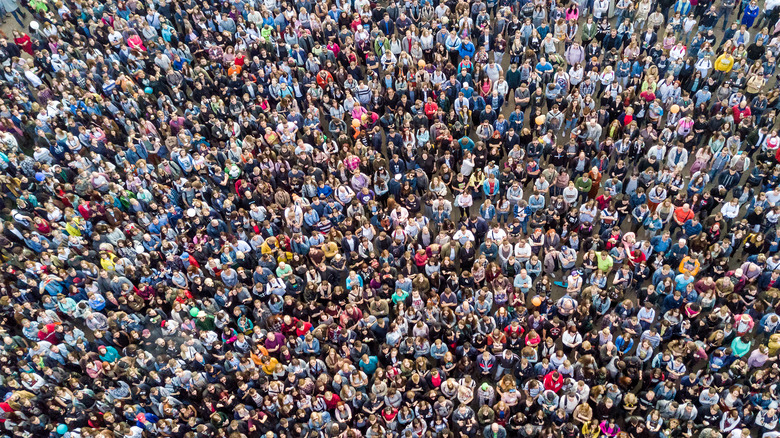How Crowd Crushes Are Prevented
Tragedy struck rapper Travis Scott's Astroworld Festival this past Friday when a sudden "crowd surge" left eight people dead, and dozens more injured. Shortly after event organizer and headline act Travis Scott took to the stage after 9 p.m., the 50,000 people in attendance on the wide-open field of NRG Park in Houston rushed to get closer. Bodies were compressed while standing, crushed and unable to breath, and despite Travis Scott's numerous attempts to intervene from the stage, not even ambulances could cut through quickly enough to escort everyone to safety. "Our hearts are broken. People go to these events looking for a good time, a chance to unwind, to make memories — it's not the kind of event you go to where you expect to find out about fatalities," Lina Hidalgo, county judge of Harris County, said on the BBC.
It's the job of event organizers to ensure that all those in attendance are safe, a job made much harder when the venue is a single, undivided, open field with a horde of people dumped in the middle. In the U.S., the first line of defense to prevent crowd surges rests with the NFPA, the National Fire Protection Association. Their guidelines include, as Fox 8 Live tells us, maintaining a ratio of one trained "crowd manager" to every 250 in attendance. They also recommend ultra commonsense practices like ensuring that there's actually enough space present for all in attendance to move about freely, as ABC News says.
Commonplace and commonsense safety precautions
In a nutshell, events have to be designed from the ground up with safety in mind. Placement of structures, flow from one area of the venue to another, and the ease of implementing emergency procedures: This can help not only prevent crowd surge, but reduce the likelihood of injury or death if some unforeseen event happens, like extreme weather. Partitioning space is key, as ABC News says. Pens near the stage, for instance, separate those closer into manageable clusters that allow security easier access, and also allow attendees a quick means of escape. Event staff have to think about choke points and the likelihood of crowds closing in on certain areas, and also assume for the ever-looming likelihood of unpredictable and irrational human behavior.
And yet, despite such obvious dangers, safety sometimes gets put on the back burner. G. Keith Still, professor of crowd science at the University of Suffolk in England, states, "Safety has no profit, so it tends to be the last thing in the budget." Still, who is an expert on crowd surge, and made a career testifying in court cases as an expert witness, says that all crowd-related incidents boil down to the same causes of space and design. As a result, people get stuck in dangerous environments "beyond your control."
Let's hope the recent incident is enough of a reason for people to take whatever precautions necessary to prevent similar tragedies from happening in the future.

